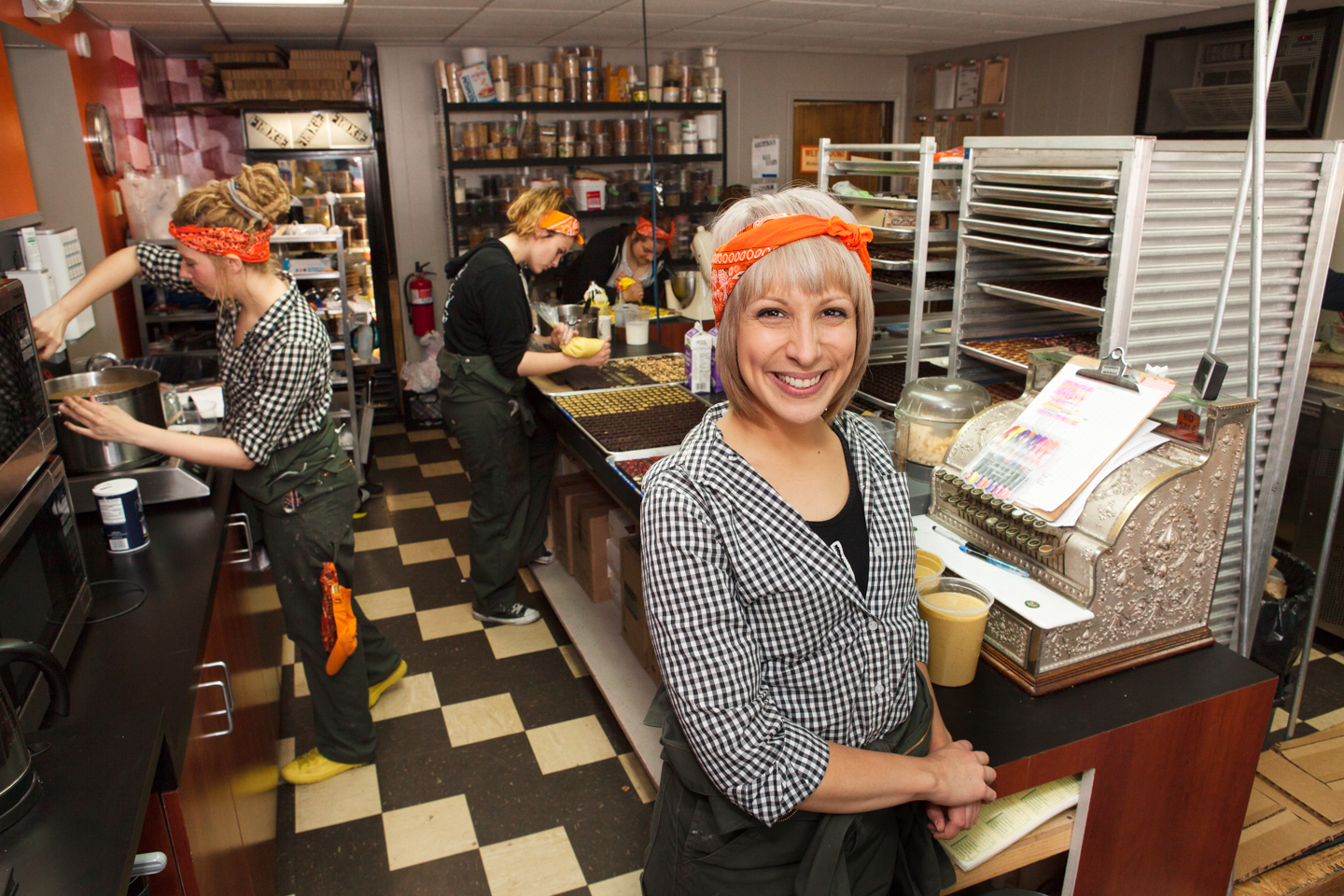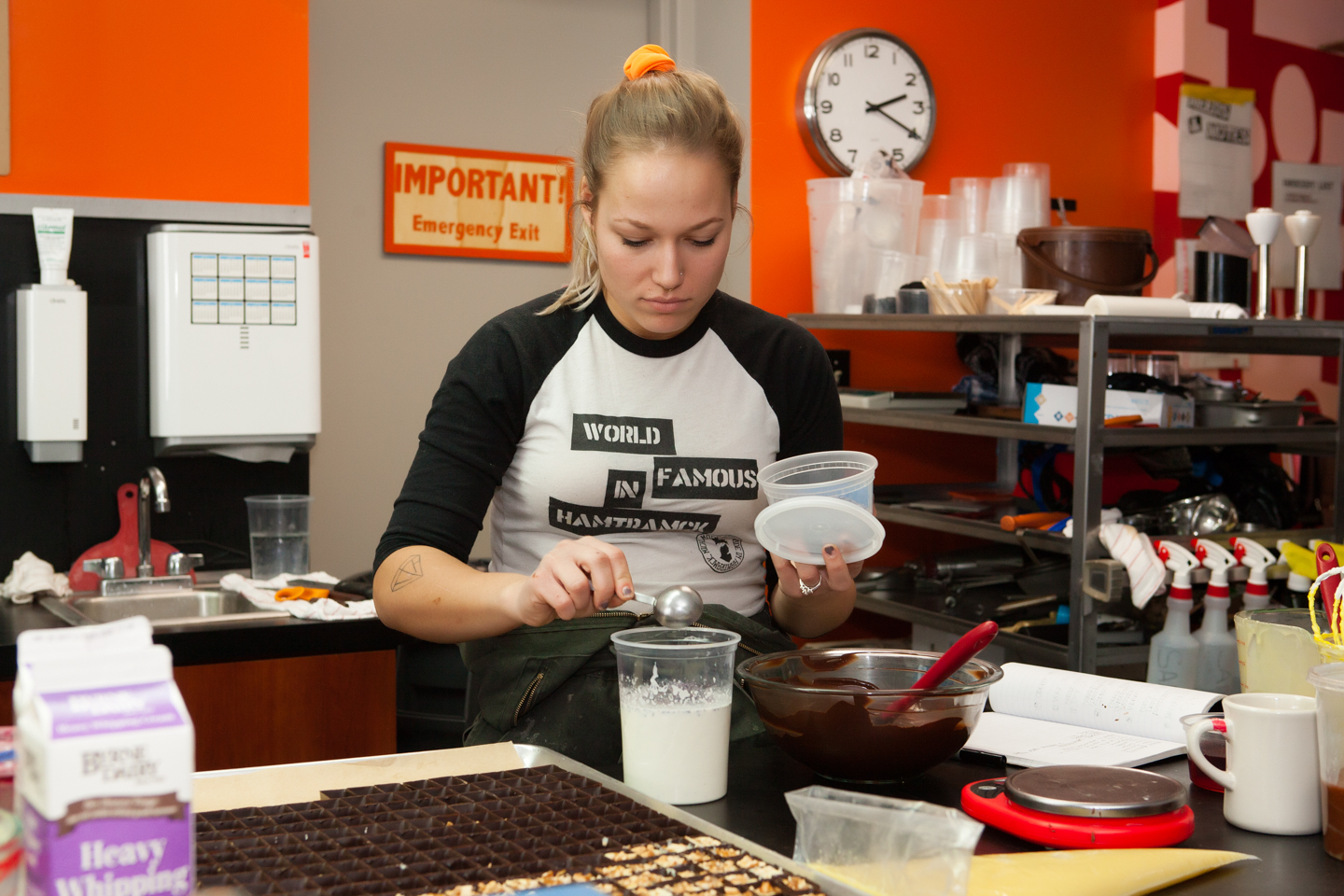by Vivian Henoch
What’s in the name Bon Bon Bon? Just ask Detroit chocolatier Alexandra (Alex) Clark. A bon bon by any other name perhaps would taste as sweet – but there’s an extra measure of goodness that goes into every bite of her Bon Bon Bon chocolates, filled with locally sourced goodies and individually wrapped with love.
What flavors might there be today? Cocoa-Cacao, Better Butter Crunch, Boston Cooler, Mexican Hot Chocolate, PB & Jam, Birthday Cake Ganache?? According to Alex, “Bon bons don’t have rules. Loosely translated, bon bons are good goodies. All the better made in Detroit. At Bon Bon Bon we start with our own special blends of fairly traded chocolates, and change up our flavors all the time, so there’s no telling what we’ll come up with next.”
Destined for chocolate
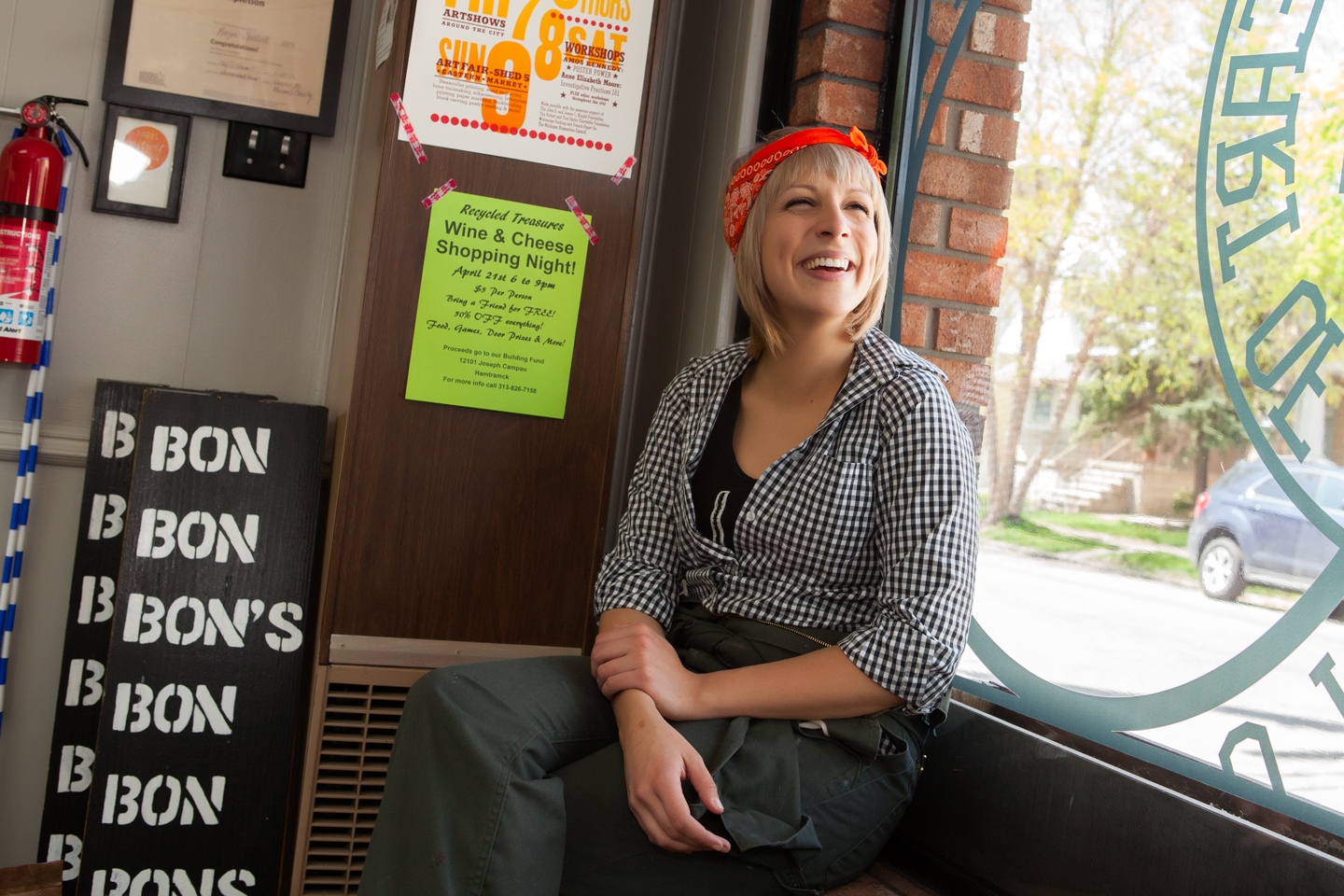
Entrepreneurial and free-spirited at heart, Alex is listed this year among Crain’s 20 in Their 20s leading “growing companies giving back and guiding change;” she’s also named in Forbes’s 30 Under 30 under the Food and Drink category. When asked about her start-up and phenomenal rise to national popularity as founder and owner of Bon Bon Bon, Alex describes her career in chocolate as a childhood dream come true and something of a genetic trait. “My grandpa’s appetite for chocolate is legendary. He’s known to skip lunch in favor of a candy bar or two. And this passion for sweets has somehow always driven my family’s respect for good quality chocolate. So, by the time I discovered chocolate as an art form and a way to make a living, my family cheered me on.”
For the record, Alex turned 29 in April, just days before bidding farewell to the cozy quarters of her 500-square- foot kitchen space on Evaline Street in Hamtramck and moving into to Bon Bon Bon’s new 5,000-square-foot flagship store and production facility around the corner on Joseph Campau. Additionally, she maintains a second retail location which she opened in 2015 in the center of Detroit’s bustling downtown business district in the Chrysler House Building on Griswold Street.

To launch Bon Bon Bon in 2014, Alex invested $32,000 of her own money (earned from an insurance settlement from car accident). Even so, she attributes the fast growth of her company to the support of her family and the neighborhood.
“When the space came up in Hamtramck, right in the neighborhood where my grandpa lived, I knew somehow that was exactly where I belonged and destined to be.” Alex says. It didn’t take long for her mom – Alex’s most trusted taster – to pitch in on weekends; her dad, too, has worked for her, serving as maintenance manager and general contractor on the new headquarters. Alex is also humbled and ever grateful to a steady stream of loyal customers – always offering to help. “It’s an honor to be the local chocolatier,” says Alex.“I truly believe it takes a village to make a chocolate shop.”
Chocolate making also takes science, creative gusto and a level of culinary skill that Alex has honed through more than a decade of experience. After earning her degree in Hospitality Business and Food Science, she studied baking and pastry arts at Schoolcraft College. She then moved to New Zealand to study Agricultural Commerce at Massey University. Then back to the States, she gained experience at Max Brenner Chocolate Bar and Restaurant in Boston, then on the line at Sander’s & Morley’s and as a pastry cook at the Detroit Athletic Club. What finally “sealed the deal” for Alex in becoming a chocolatier was Paris, where she visited dozens of chocolate shops, and then Norway where she studied and stayed with friends who owned a candy company. “I left home at 18 with this fantasy about candy making and came back to Detroit at 26 – with the confidence that I could start a shop on my own, follow my own recipes and make chocolate my way.
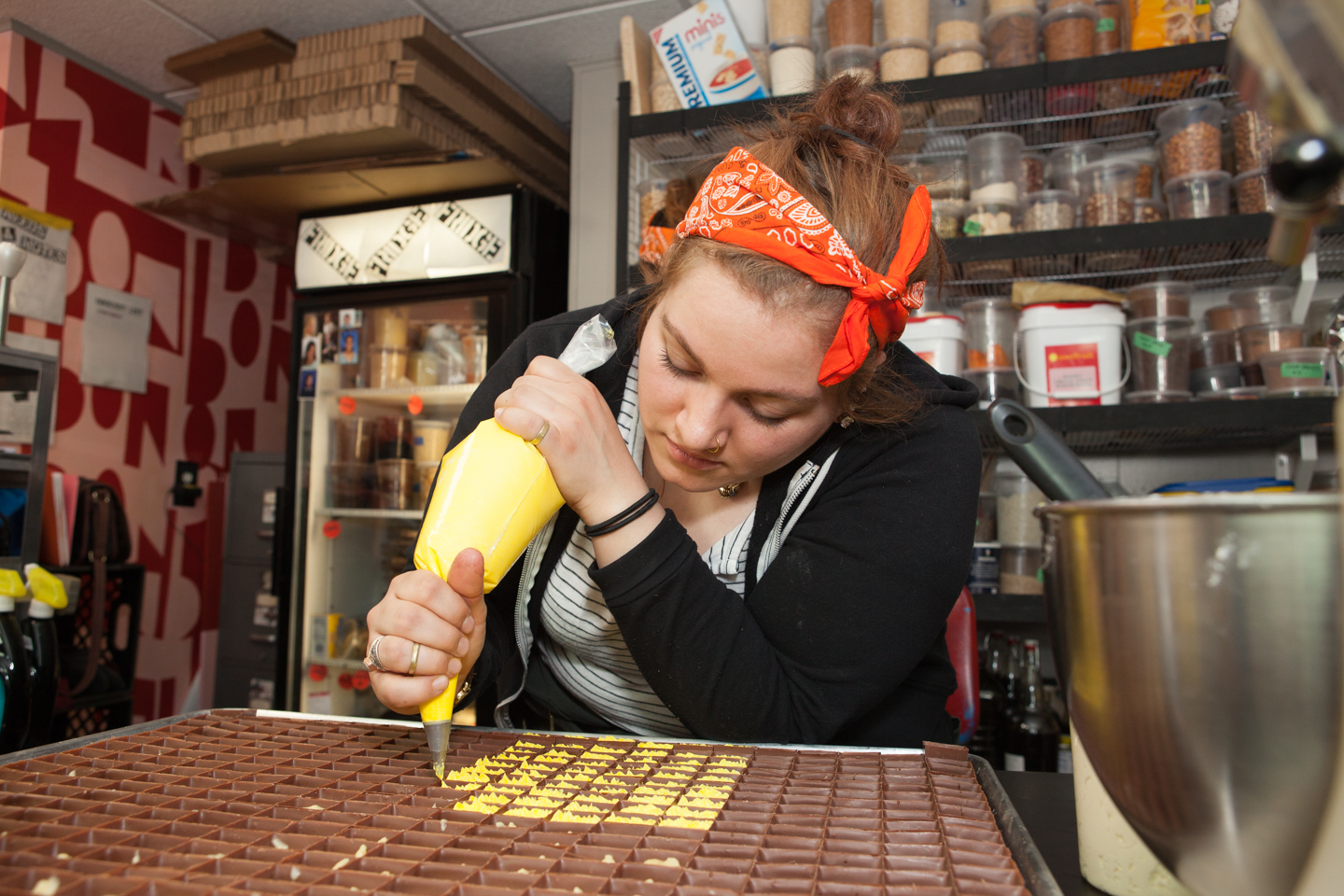
Today, Alex’s passion for chocolate extends to sharing her considerable knowledge in fair trade and sustainable chocolate production — information she serves up generously at her shop and community gatherings for chocolate tastings. In follow-up to a recent presentation she made at the Agree Downtown Synagogue, we caught up with Alex – still at the Evaline Street location, in the heat of filling chocolate orders for the weekend, while prepping for the move to 11360 Joseph Campau Ave.
A conversation with Alex Clark . . . in action
“I can’t actually sit still to talk right now,” Alex tells us cheerfully while unpacking a shipment of Republica Del Cacao samples, “but I’m happy to answer any questions you have.” And so begins our conversation on chocolate production, the cacao tree growing in her apartment and kosher chocolate recipes she discovered on a whirlwind trip to Israel.
myJewishDetroit: Why Republica chocolate?
A: Republica Del Cacao is one of my fave suppliers – a brand we love because they play extraordinarily fairly – sourcing cacao directly from small plantations in Peru, Ecuador, Colombia and the Dominican Republic. Additionally, they believe in growing the economy of their community – which means that their ingredients –sugar and milk – all come from farmers in the region, which makes for better business all around – and ultimately means that the chocolate you are eating is honest and sustaining the lives of farmers all working to produce products of the highest quality.
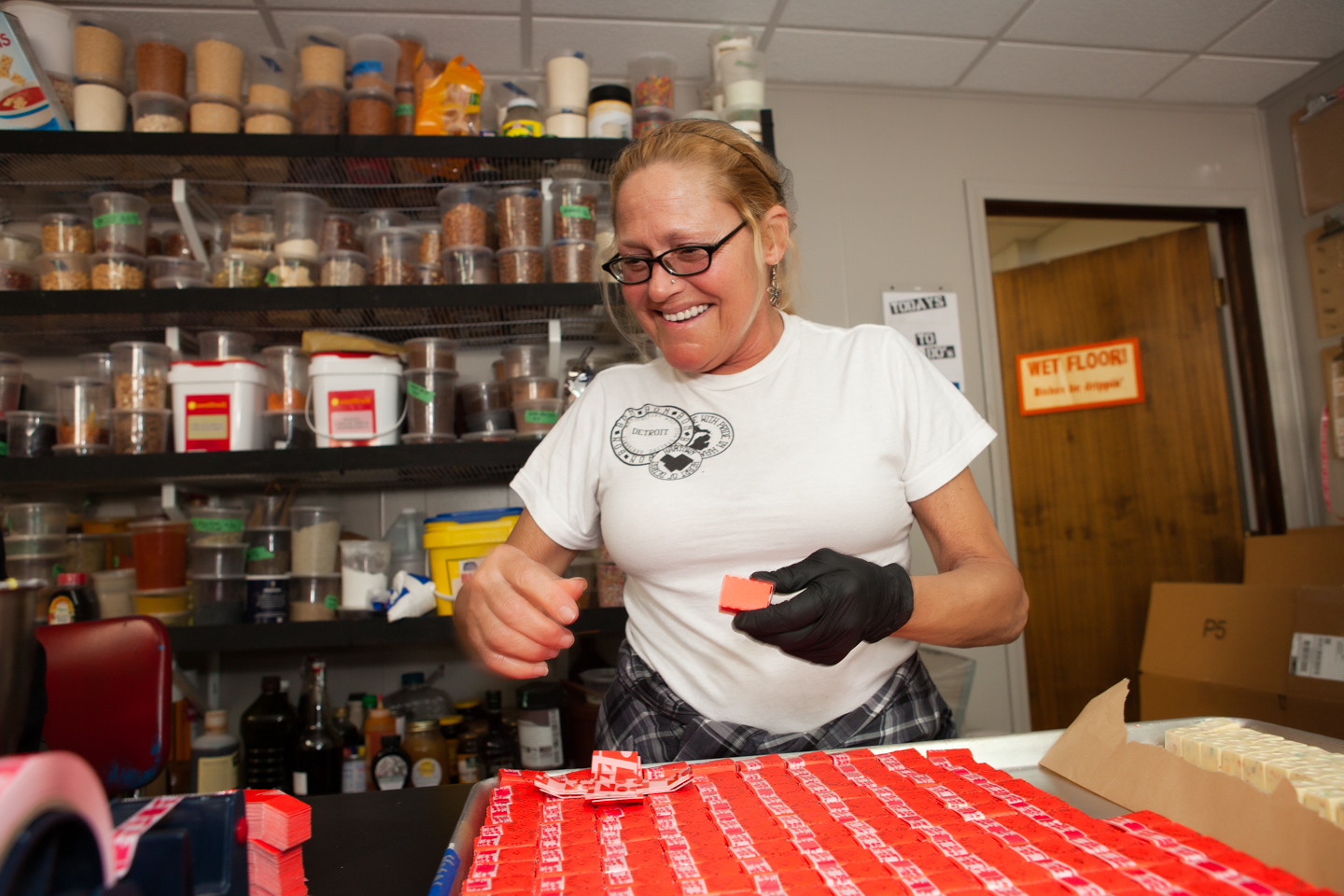
What makes cacao beans into chocolate?
That’s like asking what makes grapes into wine. Like grapes, cacao beans can taste different from year to year. Besides that, there’s no real comparison in their production processes.
Cacao trees are very specific and grow most successfully in a narrow band referred to as the Chocolate Belt which extends up to 20 degrees of latitude north and south of the equator. More than 85% of what many purveyors consider to be the world’s finest cacao today, comes from Latin America. In general, my chocolate comes from Ecuador, Columbia and Venezuela, With the samples just shipped to me today from Republica – we’re considering sources from Peru as well.
Like all crops of the earth, the various flavors of the beans themselves start with the terroir – the microclimate where they are grown. The terroir of a crop refers to the location of the farm, its soil and water, the nearest trees, the way the sun effects the growth cycle and harvest.
On the farm, there are two processes that are really critical during and after the harvest. First, the pods must be hacked off the trees at the peak of their ripeness. The pods are then opened to let the beans ferment in their own pulp. And then they are dried. Both fermentation and the drying process are all-important to flavor development. And that is where some producers tend to cut corners, because the industry is always in a hurry and cash-hungry.
So the upshot for us, as purveyors of fair trade products, we believe the closer we get to the farmers or producers in our supply chain, the more actual control we have over our price and the quality of our products.
Can you grow cacao in a greenhouse?
It’s tricky, but if you can replicate the heat and humidity of a rainforest perhaps you can. There are, in fact, three cacao trees that I know growing successfully in the area. One at the MSU Mathai Botanical Garden, one at the Conservatory on Belle Isle and the one I bought as a birthday gift for a friend, now growing remarkably well in his apartment.
How much do you travel to keep current with the industry?
As much as possible. We try to do one big trip a year and just got back from Cuba and Haiti. In Cuba we hung out with a Cuban baker – learned lots about Cuban cuisine. In Haiti, we were guests of a Haitian Agricultural Development group where we learned about an opportunity to be the sole provider of Haitian white chocolate.
Is white chocolate really chocolate?
Good question and the answer is yes (and no). White chocolate uses the fat – cocoa butter – the most expensive part of the bean. Cocoa butter is the primary ingredient in white chocolate, but most commercial operations will skimp on it and put additives into their recipes. When it comes to cocoa butter, chocolate makers compete with the cosmetic industry which has the corner on the market and the ability to pay top dollar for the product.
In your travels, what have you learned about making kosher chocolate?
I’ve had the opportunity to make kosher chocolate just once — in Israel! Amazing! I was invited by Forbes Magazine to make chocolate for a big event they were hosting in Jerusalem and Tel Aviv to celebrate and showcase the companies on this year’s Forbes 30 Under 30. We were hosted at the Carlton Hotel in Tel Aviv by Chef Eran Nachshon who took us under his wing. It was just incredible and totally new to us, learning about kosher food, the traditions in the kitchen and the challenges of using milk products with after-dinner sweets. I was fascinated by all the non-dairy alternatives and Israel’s amazing command of vegan recipes.
And we had so much fun in the markets of Tel Aviv and Jerusalem. Israel has such wonderful produce – pistachios, harissa, fresh loquats . . . and coming in from Detroit with our own Middle Eastern culinary interpretations, we made a sweet harissa caramel that really surprised them.
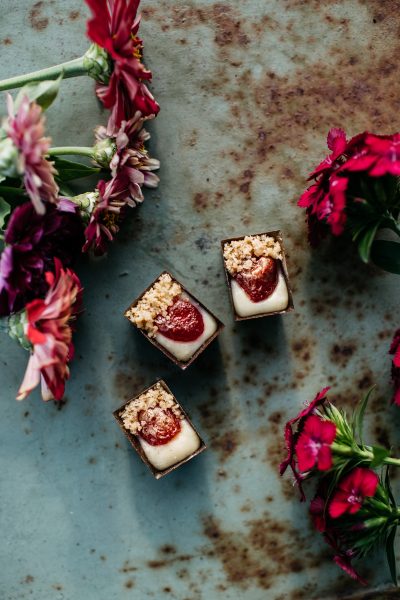
That trip was a once-in-a-lifetime experience that I would never been able to have had on my own. Before that, Israel wasn’t exactly on my top 10 list of places to travel – now I can’t wait to go back. I’m totally in love!
myJewishDetroit: What is your favorite thing about chocolate?
“My favorite thing about chocolate is that you can go anywhere in the world and get the very best taste of chocolate for less than $5. You can’t do that with a meal, you can’t even do that with a cup of coffee. So if you want the ultimate culinary experience in any city, just find yourself a good chocolate shop.”

